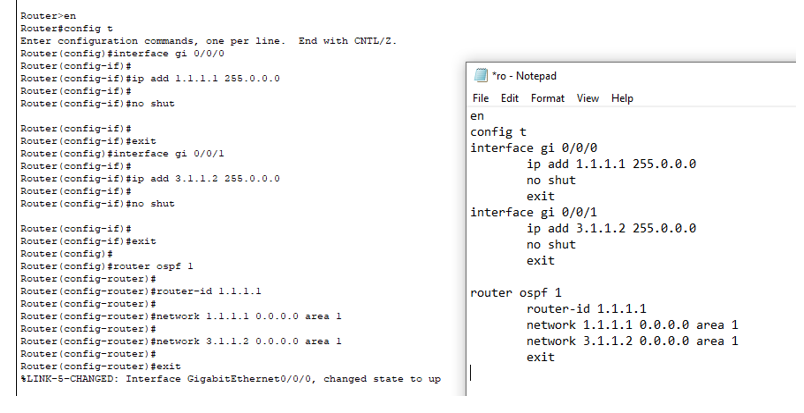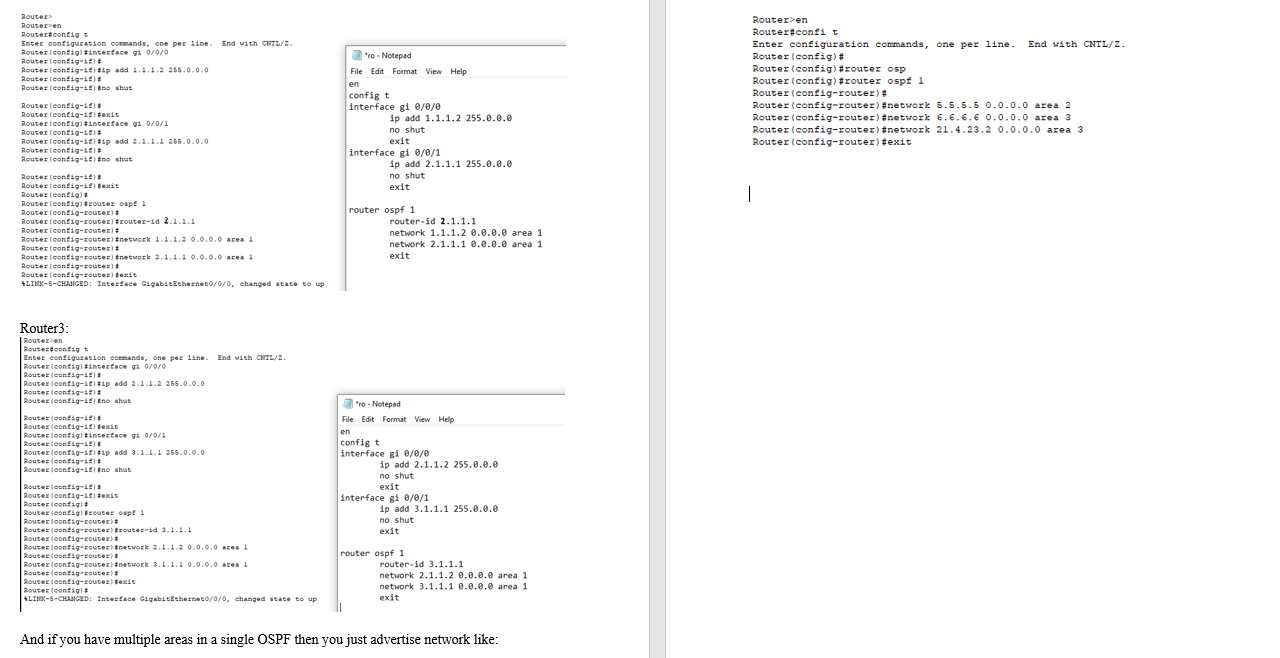Routing is process of selecting a path for the communication and it only happened if we know our neighbor and our network. Path selection is a work of router or any layer 3 (Network Layer) device.
There is a 3 ways that Network layer device select path:
• Direct Connected:
If any two layer 3 devices (routers) are connected directly automatically routing happened and device select this path for communication.
• Static Routing:
If there are more than two routers and are not connected directly so you have to tell every routers IP address to every Router only then Communication happen so you can do this by a static way or by dynamic way. In a static way you will add IPs of all router in your network to every router manually.
• Dynamic Routing:
In a Dynamic routing we use protocol and advertise our networks or IPs to the protocol so the protocol automatically selects the path that is best for the communication by its rules. We use OSPF (Open Shortest Path First) protocol in our examples.
Routing Protocol:
Routing Protocol learn routing information about IP subnets from neighboring routers. If more than one possible route exists to reach one subnet, pick the best route based on a metric. If the network topology changes—for example, a link fails—react by advertising that some routes have failed and pick a new currently best route. (This process is called convergence.)
OSPF:
In OSPF protocol Area term use and if some routers are in one area (other than Back-Bone Area) and some are in the other area (other than Back-Bone Area) so the one area routers can’t communicate with the other area routers. and router ID is very important in for making the DR (Designated Router) and BDR (Backup Designated Routers).
Single OSPF Single Area Configuration Example:
Router 1:

Router 2:

Comments :